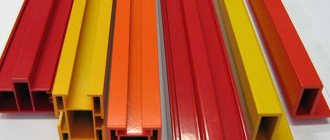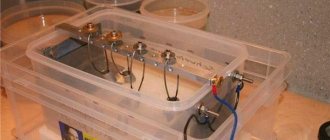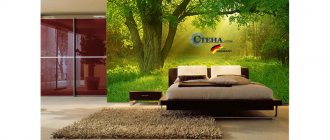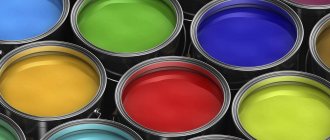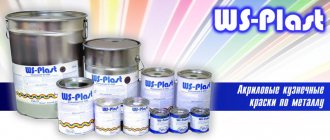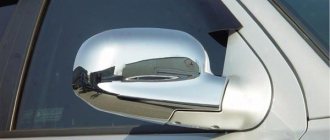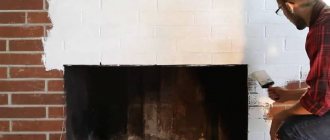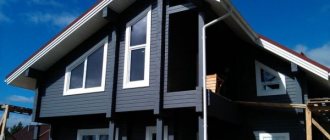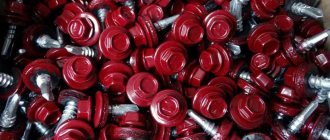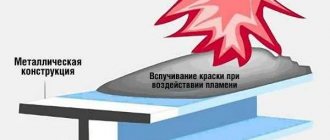Most paints do not adhere well to galvanized metal. What composition should I choose to renew a galvanized roof and how to apply it correctly?
The popularity of galvanized steel roofs is explained by their lightness, ease of processing, strength, reliability and affordability. The metal surface is protected from oxidation in air and corrosion by a thin layer of zinc, which provides reliable and long-term protection for 10–15 years. But the service life of the material ranges from 15 to 50 years. It depends on various factors: the thickness of the steel, the amount of alloying impurities, the thickness of the zinc coating and the technology of its application. Due to exposure to UV radiation, rain, snow, salts, exhaust gases, the zinc layer becomes thinner over time. Local damage forms on it, and the roof becomes less protected from corrosion.
The easiest way to increase the service life of a galvanized roof, as well as gutters, flashings and other elements made from this material, is painting. But the vast majority of paint and varnish coatings have poor adhesion to galvanized surfaces. Conventional paint interacts with the zinc layer and does not form a strong and durable protective and decorative coating. Therefore, specialized compounds are required for galvanized iron. Their main advantages: increased adhesion to metal, high anti-corrosion properties, water and frost resistance, elasticity. And the country house itself will look brighter and more attractive with a change in the color of the roof.
Pay attention to specialized compounds intended for galvanized iron. Painting can extend the life of a galvanized roof by up to 35–40 years.
Purposes of coloring
Galvanized sheets are coated with an oil layer at the factory, which protects the metal from environmental factors. However, most often, within a year or a year and a half, the layer gradually disappears due to precipitation. This is why it is recommended to paint galvanized steel. This approach will solve the following problems:
- Corrosion protection.
- The appearance of the roof will become more attractive, especially since the color can be chosen in accordance with the style of the building.
- Despite the fact that painting costs money, the financial costs in this case will still be less than if you have to replace the roof ahead of schedule.
Painting a galvanized roof
Also during painting, you need to know this rule, that the paint itself and the surface to be painted must match each other, as, for example, a galvanized roof cannot be painted with alkyd paints.
Since alkyd paint contains some oxidizing agents that can destroy a galvanized roof and because of this you will have to repaint the roof again.
Some people who do not know how to paint a roof immediately go to the Internet and ask the following questions: how and with what, to paint a rusty roof and many other questions. Yes, and that’s right, because now there are a lot of answers to this question on the Internet and you can read everything carefully and paint your roof without the help of an experienced craftsman.
In order to achieve the best results from painting the roof of your house, you need to remember that a galvanized roof should be painted only with high-tech paints. Since zinc has a very sensitive surface to all natural precipitation than ferrous metal, and some people do not know about this and make big mistakes when painting it with ordinary paint.
For galvanized roofs, it is best to use paints with good adhesion and elasticity. For example, a paint that has such qualities is matte acrylic.
Paint selection
When choosing a coloring composition, you need to take into account some features of the roofing material, including:
- Compatibility. Since zinc belongs to the group of metals with a high level of chemical activity, not just any paint can be used to paint it. An incorrectly selected composition will react with zinc, which will lead to destruction of the structure. Based on this circumstance, paint should be selected that is chemically inert and does not cause adverse reactions with this metal.
- Elasticity. Since the roof is constantly exposed to ultraviolet radiation, the roof material expands, and this can lead to damage to the integrity of the paint layer if it is insufficiently elastic. Therefore, elasticity is a mandatory requirement not only for zinc, but also for any other roof.
- Wear resistance. The roof is regularly exposed to mechanical factors: rain, hail, snow masses, accumulated debris, etc. In addition, the coating must be resistant to friction.
Acrylic compositions are characterized to the greatest extent by the listed properties. They are distinguished by strength, elasticity, and wear resistance. The main disadvantage of acrylates is their high cost.
Subtleties of painting the roof of a house
In the painting craft, there are various subtleties and secrets of professional skill that allow you to quickly and very efficiently complete any job. There are nuances to painting the roof of a house, and some of them are offered for study on this page.
It is important to understand that painting an old roof is an expensive operation, which, in principle, with the proper level of training, can be performed by any home craftsman. If you follow all technological aspects, the result will be excellent.
You always need to start painting a roof with your own hands with preliminary preparation. It includes removing rust, sealing cracks, restoring the integrity of the coating, etc.
Review of famous brands
Let's consider the advantages and disadvantages of zinc coloring compositions from among the brands popular on the market.
Hammerite
The advantages of paint include the following qualities:
- possibility of application directly to the rusty area;
- coatings are wear-resistant and have a long service life;
- good level of adhesion;
- anti-corrosion resistance;
- attractive appearance of the coating and a rich range of colors;
- short drying time;
- resistance to ultraviolet radiation.
Flaws:
- Potential risk of salt deposits.
- Insufficiently long-lasting resistance to rust (the first traces of corrosion may appear after 3-4 years).
- Poor degreasing usually causes cracking of the coating.
- If you use a roller, air bubbles may form.
Tikkurila
The positive characteristics of the paint generally coincide with “Hammerite”, however, the composition from this brand also has additional advantages:
- Higher resistance to aggressive environmental factors, including moisture and chemicals.
- Thermal stability (the coating can withstand temperatures up to 80 degrees above zero), thanks to which the paint not only does not collapse in the heat, but also adheres more firmly to the metal.
- Paintwork materials from this Finnish manufacturer tolerate low temperatures well.
Cyclol
This acrylic composition has a matte finish. The advantages of paint include the following characteristics:
- the presence of special anti-rust additives;
- moisture resistance;
- good level of adhesion to galvanization;
- uniformity of spreading;
- there is no need to prime the metal before painting;
- economical, since one coat of paint is enough;
- the coating does not fade;
- the painted surface dries quickly;
- frost resistance.
Other formulations
Below we briefly list the features of several more Russian-made coatings:
- Unicom. The main feature of this paint from a Russian manufacturer is fire resistance. Unicom is used for coatings subject to increased thermal loads.
- "Serebrol." This paint and varnish material is a one-component anti-corrosion enamel. The paint can be used both for galvanized roofs and steel surfaces. The paint is based on aluminum powder, which increases the protective parameters of the composition. In addition, paintwork materials include resins (perchlorovinyl and epoxy), as well as special additives and an organic solvent. In addition to corrosion resistance, Serebrol is characterized by resistance to moisture, mechanical damage, and chemicals (for example, oils and gasoline).
- "Rostex Super". Refers to specialized primer compositions for galvanized surfaces. The primer is used not only to protect the roof, but also various pipelines (ventilation, water drainage).
Roof material
Depending on what material the roof is made of, the type of paint is selected. Even the highest quality paint material will not adhere properly if it does not match the roof finish.
Slate
Slate roofs are especially common on old Soviet-built houses. This is an inexpensive, durable and at the same time fragile material that is susceptible to infection by various microorganisms - mosses and lichens
This must be taken into account when choosing a dye: it is important that it properly seals the pores of the material, preventing living organisms from multiplying on the roof surface
Slate practically does not expand when heated, and the elasticity of the paint is not the main thing. It is much more important that it has good adhesion and is suitable for working with slate roofs.
Black metal
Working with ferrous metal is much more difficult than working with slate. This is due to the fact that this material reacts strongly to temperature changes and is also susceptible to corrosive changes.
It is important to pay attention to the fact that the paint for ferrous metal must be moisture-resistant, preferably with anti-corrosion additives, especially if rust spots are already visible here and there. An important factor here is elasticity so that the paint layer does not crack when the roof heats up.
Galvanized metal
A positive factor when working with galvanized metals is that they do not need to be primed. A primer is only needed in places where corrosion processes have begun. However, it must be taken into account that the galvanized coating itself has poor adhesive qualities, and unsuitable paint will not adhere
It is important that it has increased adhesion and elasticity. Only then will the coating be of truly high quality
Non-ferrous metals
Roofs made of non-ferrous metals such as copper, titanium or zinc are the least common. This is due to their high cost. Consequently, there are not very many colors for such options either.
It is important to pay attention to factors such as lack of electrical conductivity, good elasticity, adhesion, and resistance to mechanical damage. As a rule, non-ferrous metals do not corrode, so it is not necessary to take an anti-corrosion compound, but it is best if the paint is moisture-proof
Surface preparation
First of all, you need to prepare the metal for painting. We start by removing the old layer of paint. To do this, we use special chemical removers. These chemicals allow you to clean the surface without serious mechanical effort. Traces of corrosion can be carefully removed with a wire brush or, more preferably, using a rust converter.
Important! The rust converter will somewhat slow down the progress of work, since after applying it to the galvanized surface, you will have to wait 3-5 days for the full onset of its effect.
When metal cleaning is completed, degrease the material with white spirit or a similar composition. This will increase the metal's ability to adhere to the paint. It should be noted that this measure is not necessary if an acrylic composition will be applied in the future; however, if the roof is not very clean, it is not recommended to neglect degreasing.
Recommendations and tips
The maximum surface area can only be obtained in calm weather, and therefore the best time to paint the roof is a calm autumn morning. Cleaning and preparing the roof surface can be done in the evening before work. The second layer is applied to the metal in the evening, and then the surfaces are thoroughly dried. During this time, you need to inspect the applied first layer and identify places, as well as flaws that require touch-up. The last thing to do is paint the elements of the ridge and drainage system.
Applying paint
Painting is most often done using a roller or wide brush. The roller is better suited for processing large and flat areas. The brush is useful for processing small parts. Working with a brush allows you to get a more uniform coating. You can also use a spray gun if you have the skills to handle this equipment.
The optimal temperature of the material to be painted is from 10 to 40 degrees above zero. Humidity should not exceed 75-80%. It is not advisable to paint on hot summer days, as an overheated base will cause uneven polymerization.
Before starting work, the paint and varnish material should be stirred well, and this should be done periodically and then during the work process. If an aerosol can is used, shake it for 20-30 seconds before starting work.
Paint is applied in two or three thin layers. If the layers are too thick, streaks will appear. Each subsequent layer can be applied only after the previous one has polymerized. The drying time of the paint is indicated by the manufacturer on the packaging.
Choosing time for painting
As for the time, they choose for coloring in the northern provinces from the beginning of May to mid-July; in the middle and southern provinces you can paint until October. You should avoid painting roofs during those months of the year when the nights become cold and damp, because the paint applied in the morning will not have time to dry until the evening, and such painting will be fragile.
Repainting iron roofs requires careful removal of not only old peeling paint from the surface, but also rust. To do this, they usually use wire brushes, brooms and scrapers. Old paint that has faded but has not yet fallen off does not need to be cleaned off and you can limit yourself to only removing the accumulated dust and dirt. If the old paint is difficult to remove, then you have to resort to annealing with a red-hot iron.
How to Paint a Metal Roof on a House
To ensure that a metal roof lasts as long as possible, it is periodically painted. This allows you to constantly maintain the protective layer of the metal surface in good condition, which will protect the coating from negative external influences. In addition, regular painting will ensure that both the roof and the entire house look consistently good. Before you start painting your roof, consider the following tips:
1. Only dry weather is suitable for painting the roof, otherwise the quality of the coating will be poor and the operation will need to be repeated quickly.
2. Hot weather is also not very favorable for painting, because at high temperatures the paint material does not dry properly. The best season for roof restoration is autumn and spring, when it is not very hot.
3
When working on the roof, it is important to take safety precautions and ensure that you have fall insurance. Shoes with rubber soles are most suitable for such activities, because they do not slip on a metal surface.
If all the necessary conditions are met, then you can proceed directly to painting using the following technology:
• First of all, the roof is inspected: it is important to detect all defects, damage and cracks. Areas damaged by corrosion should be thoroughly cleaned with a wire brush.
• The entire roof base is coated with an anti-corrosion primer.
• To seal small cracks and damage, use a special putty paste (you can prepare it yourself from dry chalk and drying oil). In order for the sealing areas to stand out when painting, a little roofing paint is added to the paste for tinting.
• To eliminate larger damages, they resort to the patch method. They are cut out of tarpaulin, soaking it in drying oil and red lead. After the patch is well saturated, it is applied to the damaged area.
• Also, before painting, you should inspect all roofing ridges and joints, if necessary, tapping them with a mallet to compact them. • The primer solution is prepared by diluting the paint with drying oil, and is applied in a thin layer over the entire roof area.
• After the primer layer has dried, you can begin the main painting, and a terry brush with stiff bristles is best suited for this, since it is much more convenient to rub the substance into the roof surface than with the same roller.
• It is recommended to paint the roof slopes first, since the material consumption in these areas is the greatest. After this, the rest of the roof is painted. It is most convenient to apply paint to a brush in small portions, spreading it well over the metal roof. To maintain the uniformity of the paint material, it must be stirred periodically.
• The number of paint layers depends on the degree of wear of the roof. If it was installed recently, the paint is applied in 2-3 layers, pausing between paintings for at least 5 days.
• It should be taken into account that the inside of a metal roof also needs painting, the coating of which is usually limited to two layers.
• The type of coloring agent is selected in the store, depending on the type of metal roof.
How to paint galvanized iron?
When repairing metal structures, roof coverings and roof overhangs, galvanized sheet metal
gland. Finishing this type of profile allows you to reduce the number of seam joints, and this, in turn, increases the impermeability of the roof.
Painting a galvanized roof
Next we will talk about how and with what material metal surfaces are painted.
Painting a metal roof
To avoid rusting of the roof, it should be painted using specially developed industrial paints.
It is known that metal rusts at an incredible rate when exposed to moisture. To avoid this destruction, specially developed industrial paints are used for painting. Painting roofs made of different types of metal requires the use of appropriate compounds. Metal roofs are divided into three categories:
- made of black metal,
- galvanized,
- from non-ferrous metals (copper, zinc).
